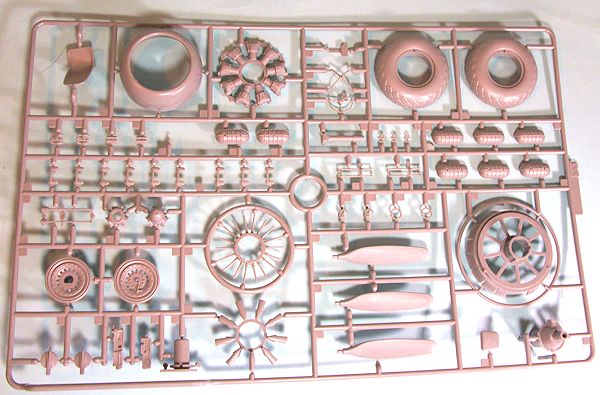
H-K Models 1/32 B-17G Flying Fortress
A test shot review by Tom Cleaver
MSRP will be $278.00

Modelers have
long complained that the Monogram B-17G first released in the late 1970s is in
need of a “modern” replacement for its perceived sins, most of which revolve
around the raised panel detail; in fact, that detail is not so wrong, since when
completed it gives a good approximation of the look of lapped panels, of
 which the
real B-17 has many.
Such a complaint when voiced at a discussion board is
usually followed by a post to the effect that a 1/48 Tamiya B-17 would cost over
$100, followed by a joking comment that what is really
needed is a 1/32 B-17.
which the
real B-17 has many.
Such a complaint when voiced at a discussion board is
usually followed by a post to the effect that a 1/48 Tamiya B-17 would cost over
$100, followed by a joking comment that what is really
needed is a 1/32 B-17.
Last year, Neil
Yan at H-K Models decided to take the “1/32 B-17 joke” seriously, and announced
an injection-molded 1/32 B-17G.
Over the time since that announcement, modelers have
seen some of the CAD drawings released for publicity, and there have been more
than a few negative comments about shape accuracy and other details as revealed
in the drawings and snide comments about “another Trumpeter project.”
Allow me to
reassure you.
Having created a working relationship last year with Neil over
the controversy that attached to the release of the 1/32 B-25J, I suggested to
him that a kit like this, which would be gone over by the Very Serious Modelers
Indeed Brigade with a fine-tooth comb, would benefit from the assistance of
Subject 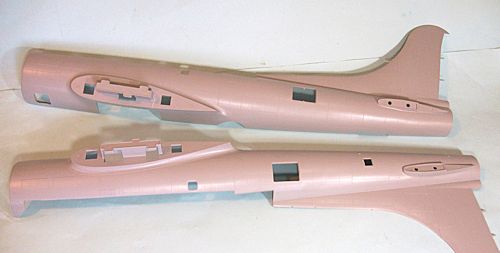 Matter
Experts among the modeling community during the design phase, who could review
the design while it was still in the computer and easy to revise before cutting
any metal.
Neil quickly agreed with this idea and asked me to put together
such a group, which I did.
(No, Wumm, I’m not getting a percentage of the profits
for doing this; I’m getting an accurate B-17 model, just like you.)
The team of SMEs included Jennings Heilig; the
detail-obsessive ChukW; Lynn Ritger; Modeling Madness’ own Steve Towle; Ray
Ferriss and Mike Kellner, who are involved in the restoration of an actual B-17;
Geoffrey Hays, who has been involved with “Shoo Shoo Baby” at the Air Force
Museum; Matt Swann; Chris Bucholtz; and Terry Dean.
Additional assistance was provided by Guillermo Rojas
Bazan, whose incredible all-metal 1/15 scale B-17G has amazed everyone who has
ever seen it.
We were able to provide detail photos from several existing
B-17s, as well as accurate drawings.
Matter
Experts among the modeling community during the design phase, who could review
the design while it was still in the computer and easy to revise before cutting
any metal.
Neil quickly agreed with this idea and asked me to put together
such a group, which I did.
(No, Wumm, I’m not getting a percentage of the profits
for doing this; I’m getting an accurate B-17 model, just like you.)
The team of SMEs included Jennings Heilig; the
detail-obsessive ChukW; Lynn Ritger; Modeling Madness’ own Steve Towle; Ray
Ferriss and Mike Kellner, who are involved in the restoration of an actual B-17;
Geoffrey Hays, who has been involved with “Shoo Shoo Baby” at the Air Force
Museum; Matt Swann; Chris Bucholtz; and Terry Dean.
Additional assistance was provided by Guillermo Rojas
Bazan, whose incredible all-metal 1/15 scale B-17G has amazed everyone who has
ever seen it.
We were able to provide detail photos from several existing
B-17s, as well as accurate drawings.
Perhaps the most
important thing the group accomplished was to discover that H-K had used the
Aero Detail drawings for their initial design.
These drawings may look wonderful, but they are far from
accurate; the only set of drawings that show the wildly-inaccurate Hasegawa 1/48
Spitfire IX to be “correct” are those found in the Aero Detail book on the
Spitfire.
With accurate drawings, the CAD design was rescued without
further problem.
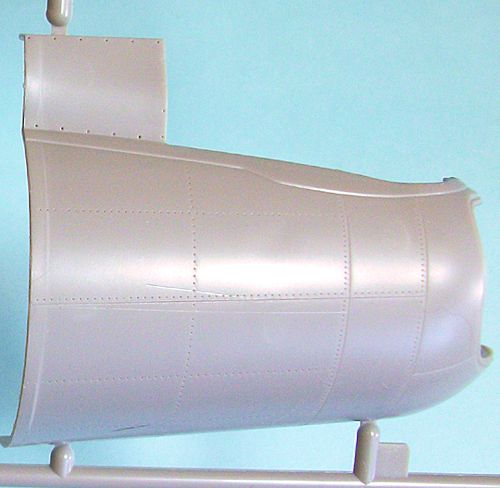 So, what do we have as a result?
What is in the box is essentially a Boeing-built
B-17G-50-BO or later series aircraft, with the staggered one-piece waist windows
and “Cheyenne” tail turret.
Outside of the Vega-built B-17s which had a more pointed
nose cone, one can get away wit making a model of the Boeing and Douglas-Long
Beach B-17G sub-series aircraft that constituted the majority of the B-17Gs
built.
Given the parts breakdown of the fuselage, different versions can be
expected in later releases.
Changing the waist window in the right fuselage half to
one that is unstaggered will allow any earlier-production B-17 to be done, while
the separate Cheyenne tail turret will allow its replacement by the earlier
style of tail “stinger.”
The separate forward fuselage ahead of the cockpit means
that a B-17F could also be done in the future.
With the amount of very petite surface detail, it is not
advisable for an impatient modeler to go hacking up the right fuselage half to
change the position of the waist window, since replacing all that detail would
be extremely difficult.
So, what do we have as a result?
What is in the box is essentially a Boeing-built
B-17G-50-BO or later series aircraft, with the staggered one-piece waist windows
and “Cheyenne” tail turret.
Outside of the Vega-built B-17s which had a more pointed
nose cone, one can get away wit making a model of the Boeing and Douglas-Long
Beach B-17G sub-series aircraft that constituted the majority of the B-17Gs
built.
Given the parts breakdown of the fuselage, different versions can be
expected in later releases.
Changing the waist window in the right fuselage half to
one that is unstaggered will allow any earlier-production B-17 to be done, while
the separate Cheyenne tail turret will allow its replacement by the earlier
style of tail “stinger.”
The separate forward fuselage ahead of the cockpit means
that a B-17F could also be done in the future.
With the amount of very petite surface detail, it is not
advisable for an impatient modeler to go hacking up the right fuselage half to
change the position of the waist window, since replacing all that detail would
be extremely difficult.
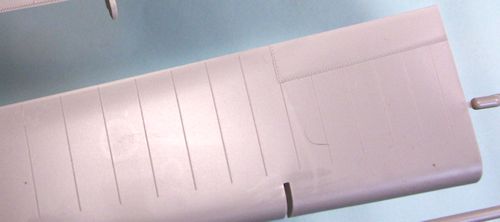

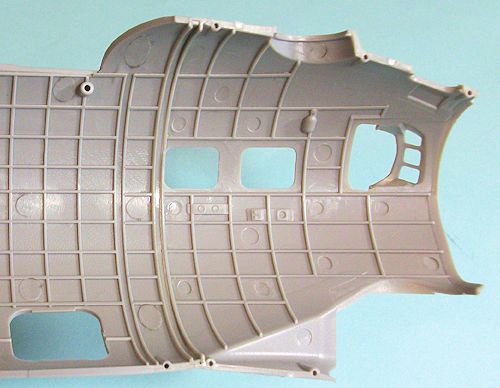 who put any
amount of additional detail into the interior will be well-rewarded for their
effort (though outside of the nose it will be hard to see any of it once the
fuselage is assembled).
The bomb bay can be displayed open, and the flaps can be
displayed lowered.
The four R-1820s are models in themselves, as were the
R-2600s in the B-25 kits.
The turbochargers are nicely detailed.
who put any
amount of additional detail into the interior will be well-rewarded for their
effort (though outside of the nose it will be hard to see any of it once the
fuselage is assembled).
The bomb bay can be displayed open, and the flaps can be
displayed lowered.
The four R-1820s are models in themselves, as were the
R-2600s in the B-25 kits.
The turbochargers are nicely detailed.
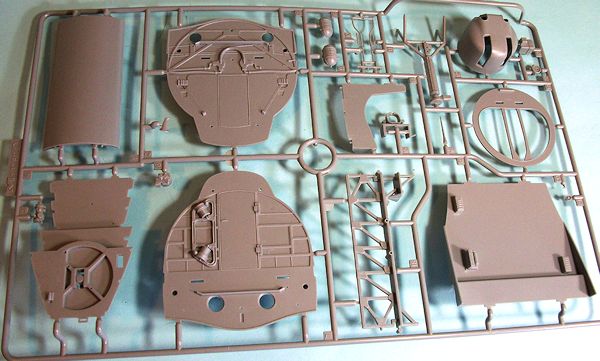 money.
According to a study done a few years back, the average
reader of Modeling Madness and the other scale modeling websites spends an
average of $50 per month on the hobby.
If you take five months to build this (which will be
easy to do) and amortize its cost over that period, your average spending on the
hobby has paid for the kit.
money.
According to a study done a few years back, the average
reader of Modeling Madness and the other scale modeling websites spends an
average of $50 per month on the hobby.
If you take five months to build this (which will be
easy to do) and amortize its cost over that period, your average spending on the
hobby has paid for the kit. For a more complete look at the CAD drawings of this kit, visit www.hk-models.de, Ed